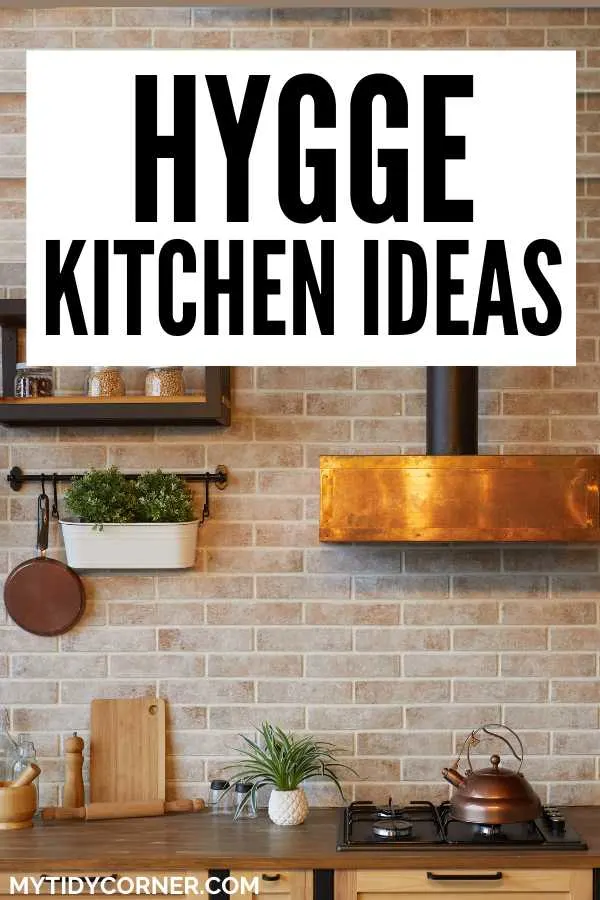While the kitchen isn’t the most obvious place to snuggle in your loungewear, it is essential to a hyggelig home. Let’s look at how to create a hygge kitchen.
I’m a massive fan of the Danish approach to life known as hygge, where comfort, coziness, and contentment are key.
To create a hygge kitchen, focus on comfort and function. Create a cozy conversation area. Choose natural materials like wood, reclaimed stone, and greenery. Reuse and recycle where you can, embracing vintage items. Stick to warmer colors rather than stark white, layering lighting for magical charm.

A hygge kitchen is the source of comfort food: chocolate with marshmallows, flaky pastries, and steaming bowls of soup.
However, translating the hygge philosophy into a kitchen design trend means more than buying a few Scandi-themed items. Instead, I’ve researched how to make your kitchen the heart of a hygge-inspired life.
8 Hygge Kitchen Ideas for Warmth and Functionality
#1. Function Over Form
Scandinavian approaches to design highlight the importance of utility as much as beauty. Ornamentation for its own sake is rejected, with clean lines and clever storage taking priority.
In an age of downsizing and smaller homes, choosing multitasking furniture is wise: instead of kitchen stools, use a bench with hidden storage, or choose a bespoke kitchen island with integrated appliances.
#2. Eat, Drink, and Be Merry
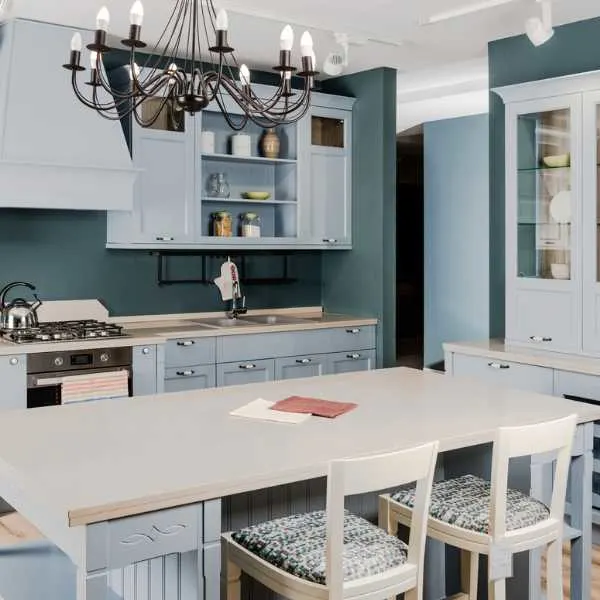
Sharing food and conversation is central to a hygge home, so ensure your kitchen has some seating. Extend a countertop to squeeze in a couple of stools for breakfasting together or for someone to keep you company while you cook.
If possible, add a small table and chairs to the kitchen so that you can cook, serve, and eat in a single space. This is typical of smaller European homes, creating a sense of togetherness.
#3. Embrace Sustainable Wood
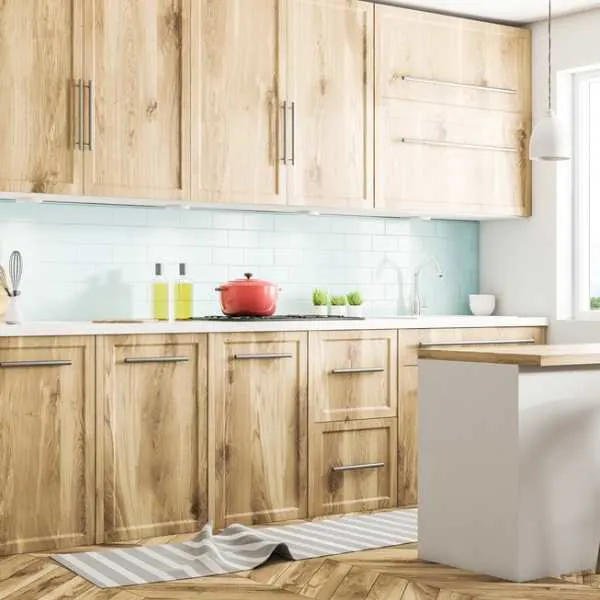
Sustainability is a tenet of Scandinavian design and resonates with a hygge lifestyle that honors nature. Natural wooden cabinetry is warm, durable, and sustainable, especially if you choose species like oak, walnut, and alder.
Another way of incorporating wood is to use wooden tiles rather than following the subway-tile look. These tiles are chic but suit a rustic, country-style kitchen very well.
A wooden floor (or hard-wearing wood-look linoleum) is a classic of Scandinavian design and adds further warmth and comfort to your hygge kitchen. Use reclaimed wood for additional sustainability.
#4. Recycle, Upcycle, and Reuse
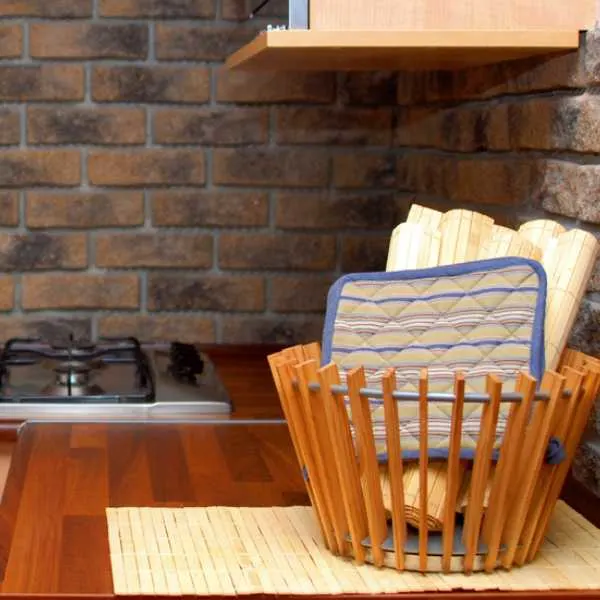
The joy of hygge-inspired design is that it embraces the preloved, the rustic, and the homely. Use reclaimed wood, metal, and brick, and reuse old baskets and crates for storage.
Heirloom items add a personal touch, which is central to the hygge focus on your own comfort and contentment. Upcycle your grandmother’s hutch to store crockery, mount your uncle’s wine rack on the walls, and combine mismatched chairs at your well-scrubbed table.
A hygge-style kitchen does not have sleek and empty countertops. Evidence of a lived-in, working kitchen makes the room feel like home rather than a showroom.
Scandinavian design highlights the beauty of the ordinary. Instead of packing away your pots, consider how a gorgeously colorful ceramic pot neatly placed on the stovetop adds a splash of brightness.
Rather than buying new decor, think about how to reuse items creatively: a watering can is called into service as a vase, and a stack of wooden chopping boards becomes a sculptural feature.
#5. Go Vintage
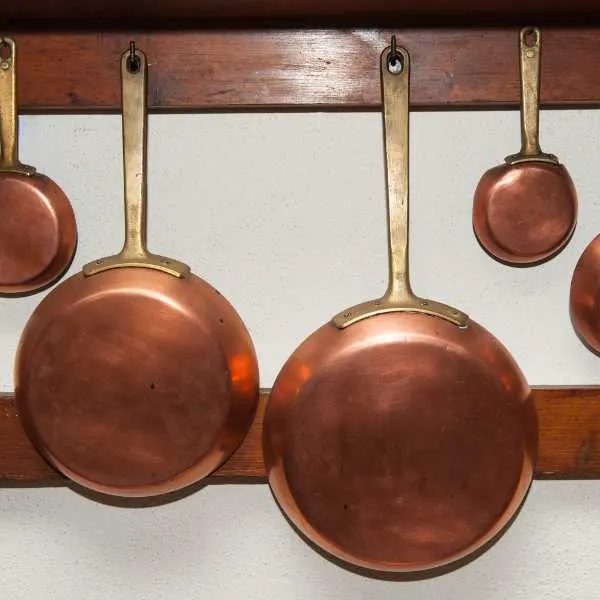
Vintage and retro items suit a hygge-style kitchen, as the philosophy values the past and the happy memories it provides. A high-tech, modern kitchen does not have a hygge-vibe.
For example, instead of gleaming faucets, choose slightly tarnished copper hardware. Copper adds the warmth lacking in super shiny stainless steel and chrome, so add its cozy gleam through tiles, light fixtures, or flatware.
Another way to create vintage charm is through light fittings. Seek out unique vintage or antique pendants or find well-designed copies.
#6. Layer Lighting
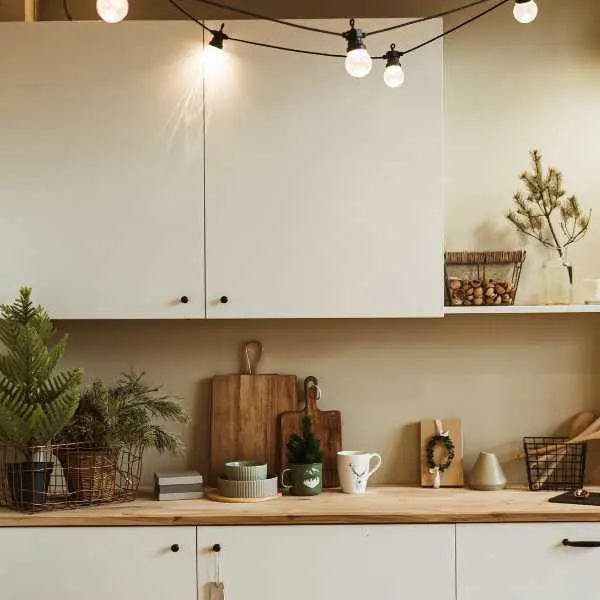
The kitchen is one room where you require bright, functional lighting rather than romantic shadows. However, this doesn’t mean you must have stark ambient lighting alone.
A hyggelig atmosphere is produced by supplementary layers of lighting, such as under cabinets, in strings of fairy lights, or simply by lighting candles, the stalwart of hygge interiors.
#7. Soften Up
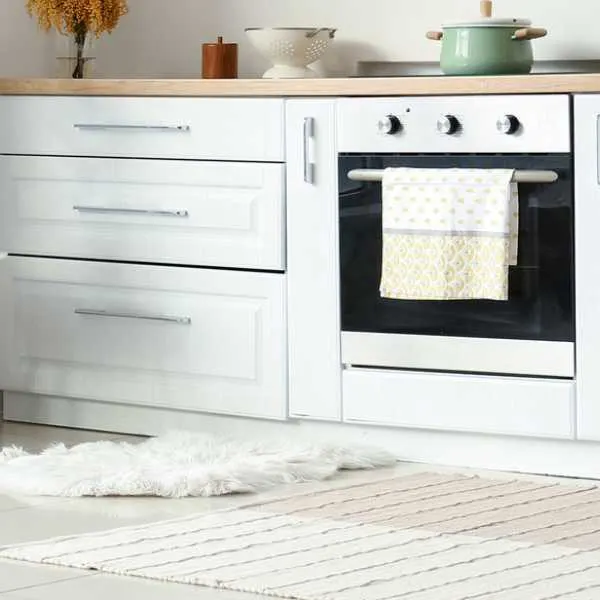
Kitchens can be harshly lit, angular environments, made sterile by bright white walls and undecorated countertops. Hygge essentially means coziness, so you need to add softening elements for warmth and comfort.
Literally, add softness to your kitchen through texture. Put a colorful, shaggy (and washable) rug on the floor to warm your toes when making morning coffee. Squeeze a lush leather sofa into a sunny corner where you can browse through recipes.
The class hygge decor accessory is the sheepskin, whether faux, curly, or super fluffy.
You can also add texture through pottery, especially handmade ceramics. The earthy feel of baked terracotta or the shimmer of celadon glaze mellows a serviceable kitchen.
Other sources of sensual texture are tablecloths, tea towels, and aprons. Go for crisp, earth-toned cotton or nubby raw linen for uber-luxury.
#8. Splurge With Color
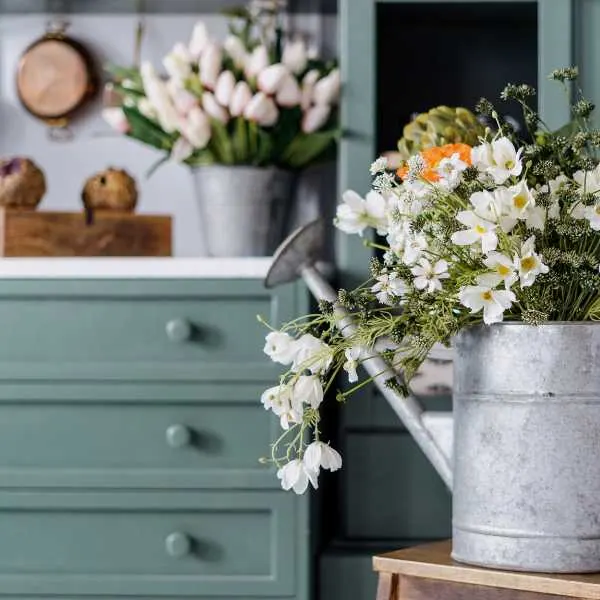
Hygge-style design doesn’t prescribe color; while white remains the most common color for kitchen paint, pure white lacks the warmth of a hyggelig home. Instead, choose a yellow-toned cream or ivory as an anchor neutral.
If you love the Scandi look, try blue as an alternative to white. This season’s blues are tempered with sea green, hinting at the well-being experienced at the seaside—bring some of your happy space into the kitchen.
Or embrace the current trend towards muted, earthier shades of green, a sign of biophilic (nature-loving interior design).
Warm white and natural wood are perfect with sage green, creating a comfortable contrast.
Terracotta reds, pinks, and oranges are also trending, making for lush, sun-baked kitchens reminiscent of the Mediterranean or SouthWest.
Another way of adding color to your kitchen is through wallpaper. If that’s too bold, hang your kids’ artwork, family photographs, and vintage posters.
In keeping with the sustainability of a hygge life, plants are the perfect way to infuse your kitchen with color and life. For those with green fingers, pots of herbs on the windowsill do double duty.
There are faux greenery and hardier climbing plants for those who can’t keep a cactus alive.
Final Thoughts on Creating a Hygge Kitchen
The kitchen is the heart of the hygge home, producing warm drinks and comforting meals. The room should be welcoming, a place to gather around the kitchen table and share news and memories. Create a haven with earthy colors, natural materials, and softly flickering lights as you invite those you love to gather.
Related Hygge Decor Article:
